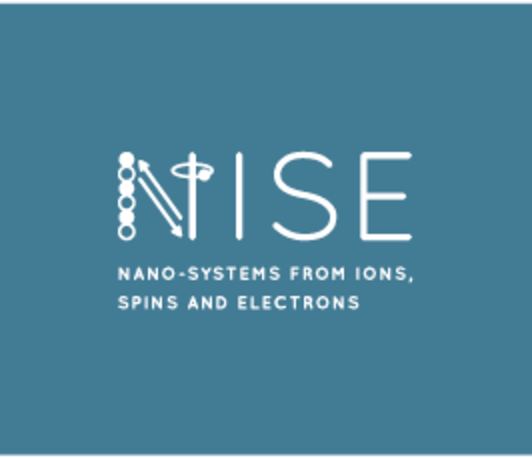Topological generation and control of spin-triplet super currents in chiral antiferromagnetic Josephson junctions
Seminar
- Datum: 23.08.2022
- Uhrzeit: 11:00
- Vortragender: Kun-Rok Jeon
- Department of Physics, Chung-Ang University, Seoul, Republic of Korea
- Ort: Max-Planck-Institut für Mikrostrukturphysik, Weinberg 2, 06120 Halle (Saale)
- Raum: Lecture Hall, B.1.11

The proximity-coupling of a chiral non-collinear antiferromagnet (AFM) [1,2] with a singlet superconductor allows spin-unpolarized singlet Cooper pairs to be converted into spin-polarized triplet pairs, thereby enabling non-dissipative, long-range spin correlations [3,4]. The mechanism of this conversion derives from fictitious magnetic fields that are created by a non-zero Berry phase [5] in AFMs with non-collinear atomic-scale spin arrangements [1,2]. In the first part of my talk, I would like to describe our recent achievement of long-ranged lateral Josephson supercurrents through an epitaxial thin film of the triangular chiral AFM Mn Ge [6]. The Josephson supercurrents in this chiral 3
AFM decay by approximately one to two orders of magni- tude slower than would be expected for singlet pair cor- relations [3,4] and their response to an external magnetic field reflects a clear spatial quantum interference. Given the long-range supercurrents present in both single- and mixed-phase Mn3Ge, but absent in a collinear AFM IrMn, our results pave a way for the topological generation of spin-polarized triplet pairs [3,4] via Berry phase enginee- ring [5] of the chiral AFMs.
Spin-triplet supercurrent spin-valves [7-9] - switching the spin-polarized triplet supercurrents on and off via a mag- netic-field-controlled non-collinearity between the spin- mixer and spin-rotator magnetizations in ferromagnetic Josephson junctions - are of practical importance for the realization of superconducting spintronic logic circuits [3].
In the second part, I would like to present our recent demonstration of an antiferromagnetic equivalent of such spin-triplet supercurrent spin-valves [7-9] in chiral anti- ferromagnetic Josephson junctions and a direct current superconducting quantum interference device (dc SQUID), where non-collinear atomic-scale spin arrangements in the topological chiral antiferromagnet Mn3Ge [1,2] with fic- titious magnetic fields (i.e. Berry curvature)[8] accommo- date triplet Cooper pairing over a long distance (> 150 nm) [6]. We theoretically reproduce the observed supercur- rent spin-valve behaviours under a tiny magnetic field (< 2 mT) for current-biased junctions and a dc SQUID, posses- sing hysteretic field interference of the Josephson critical current, based on the magnetic-field-modulated antiferro- magnetic texture which alters the Berry curvature [6,10]. This provides a topological route for controlling the pair amplitude of spin triplets in the single chiral antiferroma- gnet.
If time permits, I will briefly outline outstanding technical issues for the realization of energy-efficient (or even dissi- pation-less) spintronic technologies and present my rese- arch direction/plan of how to address these issues in col- laboration with MPI of Microstructure Physics.
References
[1] Nature 527, 212 (2015), [2] Sci. Adv. 2, e1501870 (2016), [3] Nat. Phys. 11, 307 (2015), [4] Rep. Prog. Phys. 78, 104501 (2015), [5] Rev. Mod. Phys. 82, 1959 (2010), [6] Nat. Mater. 20, 1358 (2021), [7] Phys. Rev. B 76, 060504(R) (2007), [8] Nat. Comm. 5, 4771 (2014), [9] Phys. Rev. Lett. 116, 077001 (2016), [10] Nat. Comm. 12, 572 (2021).